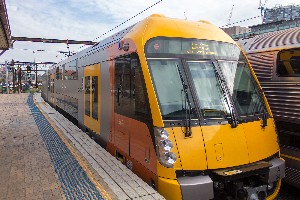 NEW DELHI: In the backdrop of back-to-back rail accidents, the current safety standards of Indian Railways have assumed centre-stage again in India’s development agenda. As on March 2016, Indian Railways data shows that 66 of 105 serious rail accidents happen due to mistakes or negligence by railway staff.
NEW DELHI: In the backdrop of back-to-back rail accidents, the current safety standards of Indian Railways have assumed centre-stage again in India’s development agenda. As on March 2016, Indian Railways data shows that 66 of 105 serious rail accidents happen due to mistakes or negligence by railway staff.
Keeping this in mind, Indian Railways has decided to collaborate with Australian firms to revamp railway safety in India.
A part of Indian government’s ₹2.8 lakh crore plan for the rail sector (called Re-Build Railways), the tie-up will result in measures such as the development of high-tech driver training centres, adaptation of international safety models and procurement of sensor-based track detection machines from Australia. In 2014, a $30 million tender floated by the Indian Railways for setting up driver training centres in 12 cities (Mumbai, Kolkata, Ahmedabad, Jodhpur, Jalandhar, Vijayawada, Siliguri, Jhansi, Itarsi, Kharagpur, Ghaziabad and Tatanagar) was bagged by the Sydac Australia.
Now nearing completion, the project has led to the development of 12 high-tech training centres with 3D rail simulators and 72 regular training centres with smaller simulators.
Dermot Dixon, the managing director of Sydac Australia, said the company has bid for the new tender with the aim of increasing the number of simulators in these centres. He also added that the firm is willing to provide training solutions to the Indian Railways for personnel involved in signalling and switching operations.
In another tie-up with an Australian firm, Indian Railways is partnering with Track IQ to procure high-tech equipment that includes sensor-based systems that can detect cracks in rail tracks.With the aim of reducing rail accidents by 50% in the next two years, Indian Railways is also working to make its safety research institute operational at the earliest. Named SRESTHA (Special Railway Establishment for Strategic Technology & Holistic Advancement), it will focus on developing cutting-edge rail technology for both local and global use. Simultaneously, it will also help Indian Railways adapt international models to the national rail environment.

